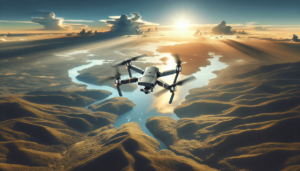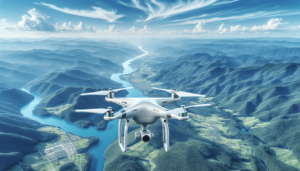Have you ever looked at a stunning aerial photograph and wondered, “How do they make it look so effortless from up there?” It’s a bit like the sky’s taken a selfie, isn’t it? Yet, there’s more to aerial photography than just sending a drone up into the clouds. A multitude of secrets and tiny tricks come together to create those breathtaking shots. Today, we’re going to share some of these with you, particularly if you’re just starting out in the world of aerial photography. Trust us, with the right tips, that sky-high perspective will soon feel like second nature.

The Magic of Understanding Your Equipment
We all know that feeling when we get a new gadget—it’s shiny, it’s exciting, and it comes with a manual we seldom read. But when it comes to aerial photography, knowing your equipment inside out can make a world of difference. After all, the camera is our brush, and the sky is our canvas.
Getting to Know Your Drone
Getting acquainted with your drone is like meeting a new friend—one who might occasionally drift off but comes back with a spectacular view. Spend some time understanding how it responds to your controls. Experiment with its range, speed, and capabilities. This bonding time can spare you embarrassing moments like having your drone stuck in a tree or flying into a neighbor’s barbecue.
Camera Settings Are Your Best Friend
Think of camera settings as the spices in your aerial photography recipe. Too much exposure, and it’s bland; too little, and it’s overwhelming. Spend some time fiddling with your camera’s ISO, shutter speed, and aperture. Don’t worry if you don’t get it right every time—practice makes perfect. Just remember, these settings will ultimately let you capture the vivid colors of a sunrise or the mystery of a foggy morning.
Location, Location, Location
It’s not just a mantra for real estate agents; it’s equally vital in aerial photography. The right location can elevate your photography from ordinary to magical.
Scouting: The Mission Before the Mission
Before you fly your drone into the clouds, it’s crucial to scout your location. Check for obstacles like power lines or those pesky seagulls who seem hell-bent on including themselves in every shot. Understanding the layout of the land helps in planning your flight path and capturing the best angles. Plus, it keeps you in the good books of local authorities by avoiding no-fly zones.
Understanding the Light
Have you ever stepped outside in the golden hour and felt like the world is just, well, glowing? Lighting in aerial photography works much the same way. Early mornings and late afternoons provide that soft and diffused light perfect for aerial shots. Avoid shooting at noon unless you’re aiming for harsh shadows and washed-out colors.
The Ballet of Flight Planning
If aerial photography were a performance, then flight planning would be the choreography. Each movement must be deliberate and poised to achieve that breathtaking capture.
Mapping Your Shots
We’re not saying your drone should be a diva, but mapping your shots can help you get the best views. Plan your flight to capture various perspectives and compositions. Trust us, some of the best shots happen when you’ve meticulously planned to the point of seeming spontaneous.
Battery Management: Staying Powered in the Air
We’ve all been there—watching battery bars deplete faster than a melting ice cream cone on a hot day. Make sure to charge your batteries thoroughly before a shoot and carry spares. You wouldn’t want to capture half of a scenic lake when your drone decides to head home early.
Mastering the Art of Composition
A stunning view from the sky doesn’t automatically make an equally stunning photograph. This is where composition plays its crucial role.
Rule of Thirds: Your Guiding Principle
Ah, the rule of thirds—a therapy session’s worth of advice in photographic terms. Aligning your subject with the grid lines and intersections makes for a balanced and engaging shot. It’s like the universe intended to split our frames into grids for added flair.
Leading Lines and Symmetry
In aerial photography, leading lines can create a path that guides our eyes around the image. Think roads, rivers, or rows of trees—all leading us somewhere beautiful. Symmetry, on the other hand, adds harmony and balance, whether it’s a city grid or a lone stand-up paddleboarder cutting through a mirrored lake.
Editing: The Secret Sauce
Now that you’ve captured your perfect shots, it’s time for editing—that part of the process where magic, or possibly over-caffeination, happens.
Post-Processing Like a Pro
Editing is where we take our raw shots and sprinkle a bit of extra magic. From adjusting the contrast to enhancing colors, each tweak makes a difference. But be cautious—over-editing can turn your serene landscape into something more reminiscent of a cartoon.
Using Editing Software
Software like Adobe Lightroom or Photoshop is your playground here. And much like any playground, safety first. Invest time in learning these tools; they can enable you to adjust exposure, contrast, and saturation, bringing depth to your images. There’s a thrill in seeing your photos transform from good to ‘wow!’.
Practicing Patience and Persistence
Every skill comes with its hurdles. So, if you find your early shots don’t look like the ones in magazines, you’re not alone. We all trip a few times before we walk.
Embracing Trial and Error
The journey to capturing breathtaking aerial photographs is not a sprint—it’s more like a leisurely glider ride across the skies. Testing different settings, angles, and times of day is all part of the learning process. So, go ahead and click away. Some shots will work, some won’t, and that’s okay.
Building a Routine
Having a consistent routine will keep your skills sharp. Set aside regular time slots for practice, whether it’s once a day or weekly. Over time, you’ll gain confidence in your piloting skills, understand what works for you, and, most importantly, enjoy the adventure.
Legalese and Aerial Etiquette
Nobody likes getting caught in legal webs, especially when we’re trying to capture ethereal skies. It’s our responsibility to know the rules of the airspace we enter.
Understanding Local Regulations
A crucial, yet often neglected part of aerial photography is understanding local aviation laws. We need to keep updated on no-fly zones and height restrictions to ensure our flights remain safe and legal. Additionally, acquiring appropriate licenses might not be as intriguing as a new drone, but it’s essential.
Respecting Privacy
Lastly, there’s a fine line between capturing beautiful lands and peeping into someone’s backyard barbecue. Be mindful of where you’re pointing that lens. Respecting privacy not only helps maintain our reputation as responsible aerial photographers but also keeps those potentially awkward conversations at bay.
These aerial photography secrets are no longer secrets just to us. Armed with these tips, we can begin crafting images that evoke wonder and captivate hearts. So, let’s grab that remote, take a deep breath, and see what the world above has to offer. Together, we’ll turn those “how did they do that?” photos into “Look what we captured!” masterpieces.
![7 Essential Aerial Photography Tips For Beginners [2025]](https://droneaperture.com/wp-content/uploads/2025/01/7-essential-aerial-photography-tips-for-beginners-2025-1-300x171.png)

